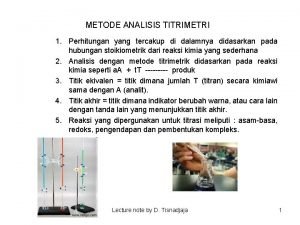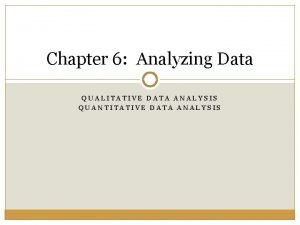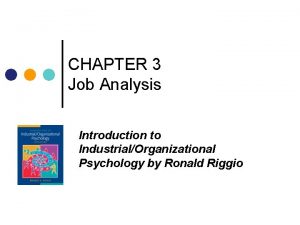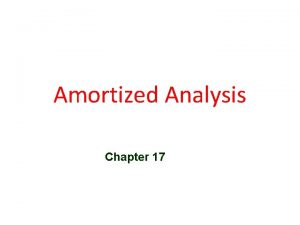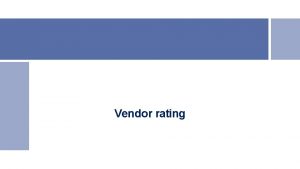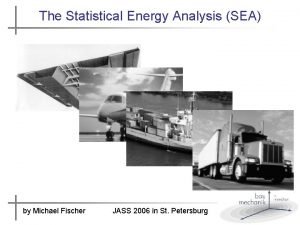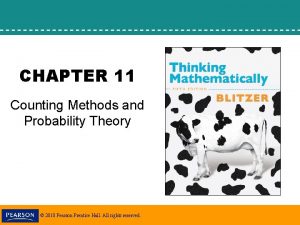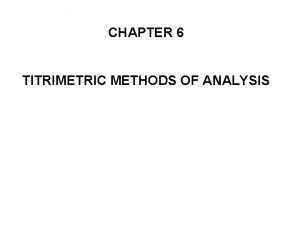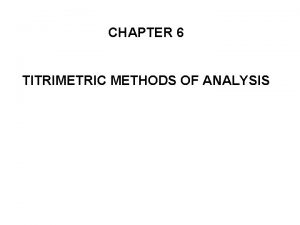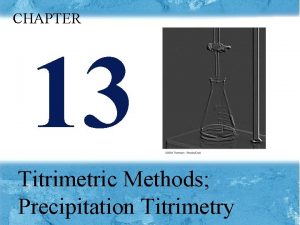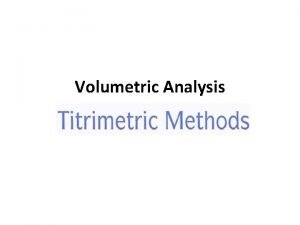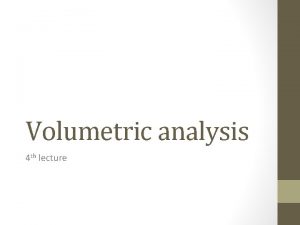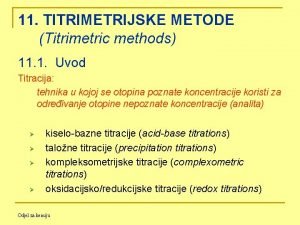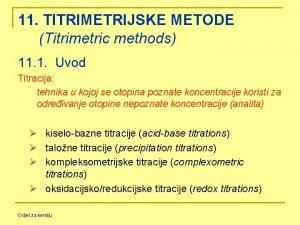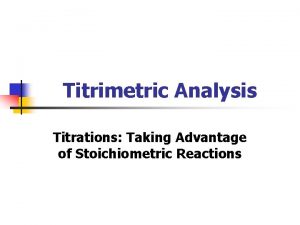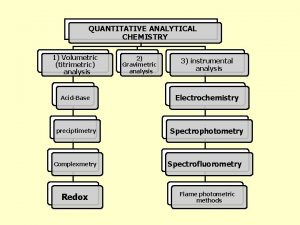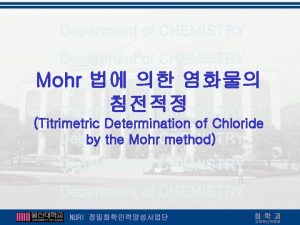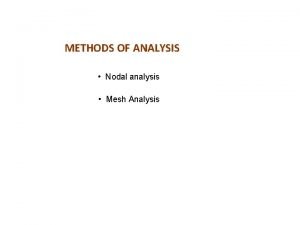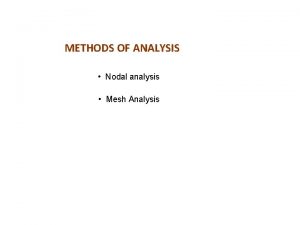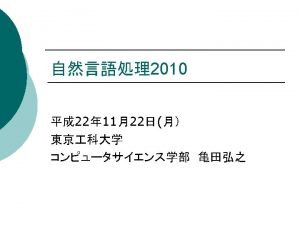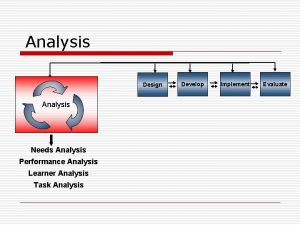CHAPTER 6 TITRIMETRIC METHODS OF ANALYSIS Titrimetric methods


















- Slides: 18

CHAPTER 6 TITRIMETRIC METHODS OF ANALYSIS

Titrimetric methods include a large and powerful group of quantitative procedures based on measuring the amount of a reagent of known concentration (standard solutiontitrant) that is consumed by the analyte. Titrimetry is a term which includes a group of analytical methods based on determining the quantity of a reagent of known concentration that is required to react completely with the analyte.

Basic principle a. A +b. B → Products A: Titrant (standard solution) B: Analyte (unknown ) a and b are number of moles of each

Requirments in. Titration 1 - stoichiometric reaction 2 - rapid rate reaction 3 - quantitative reaction (99. 9%complete at stoichiometry) 4 -have a defined end or equivalence point

Equivalence and end Points Equivalence point: Related to the amounts of reactants consumed. End point Related to the physical sign that associate with the condition of chemical equivalence. Ideally, the end point and equivalent one coincide. (variation may be to color change of indicator)

Standard solutions Standard Solution - A primary standard - A secondary standard Standardization A process in which concentration of a volumetric solution is determined by titrating it with a known mass of a primary standard.

§ Titration: This is performed by adding a standard solution from a buret or other liquid- dispensing device to a solution of the analyte until the point at which the reaction is believed to be complete. Solution of Na. OH Solution of HCl 5 m. L

PRIMARY STANDARD • • • HIGH PURITY ATMOSPHERIC STABILITY INDEPENDENT OF HUMIDITY MODEST COST LARGE MOLAR MASS NON HGYROSCOPIC

Types of titrimetry 1 - Precipitation: Ag+ + Cl- → Ag. Cl (s) 2 - Acid Base titration: OH- + HA → A- + H 2 O 3 - Complex formation EDTA 2 - + Ca 2+ → EDTA Ca. x. H 2 O 4 - Oxidation Reduction Mn. O 4 - + 5 Fe 2+ + 8 H+ → 5 Fe 3+ + Mn 2++4 H 2 O

Calculations with Molarity The mole: is the formula weight of a substance expressed in grams Number of moles = weight in Grams/formula weight Number of m. moles = weight in milligrams/formula weight Molarity= Moles/Liter or mmoles/ml

Moles= Volume (L). (M) Weight (g) = Volume (L). (M). form weight (g) m. Moles= Volume (ml). (M) Weight (mg) = Volume (ml). (M). form weight (g)

Calculating the results of Titration Needs: the volume and molarity of the titrant a. A + b. B → (Titrant) Products (substance titrated) No. of m. moles of A = Volume of A titrated (ml). Molarity of A (M) Or mmoles. A = ml. A. (MA) No. of m. moles of B is obtained by multiplying the No. of mmoles of A by the combining ratio (b/a)

mmoles. B = mmoles. A. (b/a) = ml. A. (MA). (b/a)

If the weight of substance is needed: from no. of mmoles Wt (mg) = mmoles. Form wt (g) mg. B = (ml. A). (MA). (b/a). (form Wt. B) If % of B is needed in a sample = (Wt. B/Wtsample). 100 The same is B% =(mg. B/mg. S). 100 B% = (ml. A). (MA). (b/a). (form Wt. B)(100)/mg. S


Calculating the molarity of a solution from a standardizing titration This means that from the weight of primary standard substance (B )when dissolved and titrated with other solution, the molarity of the solution (A) can be calculated as follows: a. A + b. B → (Solution. A) Products (primary standard) (ml. A) (MA)/a = (ml. B) (MB)/b (ml. B) (MB) = mmoles. B = mg. B /Form Wt. B (MA)/a = mg. B/ (ml. A) (b/a) (Form Wt. B)


Exercises Excercize 1 How many ml of 0. 25 M Na. OH will react with 10. 0 ml of 0. 10 M H 2 SO 4.
 Titimetri adalah
Titimetri adalah Metal coping fpd
Metal coping fpd Fact-finding techniques in system analysis and design
Fact-finding techniques in system analysis and design Energy method
Energy method Feedback analysis methods
Feedback analysis methods Discuss the importance of data in a legal research.
Discuss the importance of data in a legal research. Data analysis methods
Data analysis methods Job analysis introduction
Job analysis introduction Inorganic precipitating agents examples
Inorganic precipitating agents examples Method
Method Aggregate method amortized analysis
Aggregate method amortized analysis Input output design
Input output design Vendor rating methods
Vendor rating methods Character traits method
Character traits method Trade area analysis methods
Trade area analysis methods Methods of vibration analysis
Methods of vibration analysis Research methods design and analysis
Research methods design and analysis Chapter 19 methods of therapy
Chapter 19 methods of therapy Chapter 11 counting methods and probability theory answers
Chapter 11 counting methods and probability theory answers
